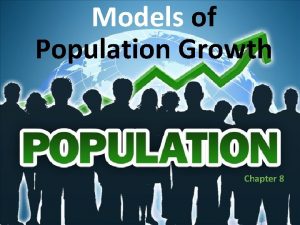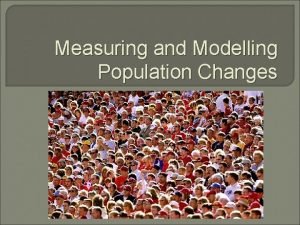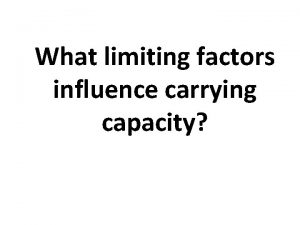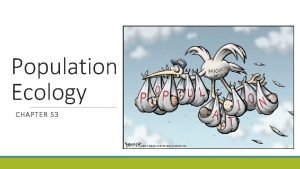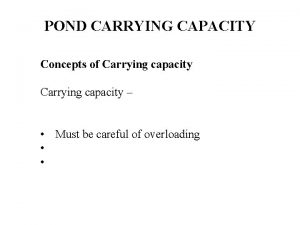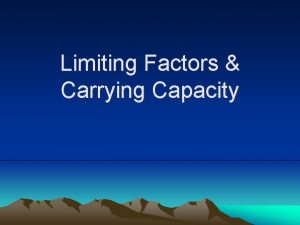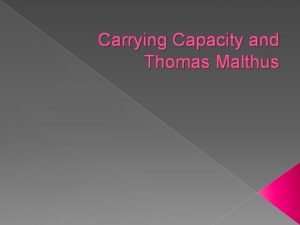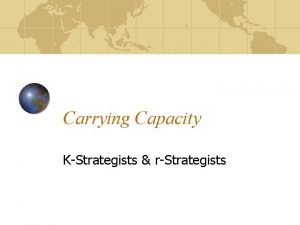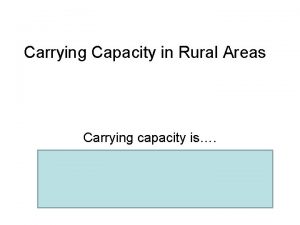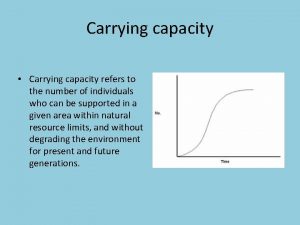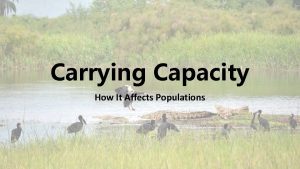Population Change Chapter 35 Population Carrying Capacity Each







- Slides: 7

Population Change Chapter 35

• • • Population & Carrying Capacity Each species have huge reproductive potential - especially in a new environment If birth rate exceeds death rate = population growth But population cannot increase indefinitely Carrying capacity: - maximum population that can be supported by an environment Growth curves show 4 phases Carrying capacity regulated by LIMITING FACTORS E. g. food, water, oxygen, & space Predators, disease, & pollution can also have an effect

Human Population Explosion • Humans not controlled by most limiting factors • - no predators, food/water shortage etc. • Effect of agriculture: • Up to 10, 000 years ago – all humans were ‘huntergatherers’ • No food reserves (population was stable) • Agriculture began (crops grown, animals domesticated) • Led to human population

Modern undeveloped societies • Totally dependant on immediate environment for food, water & shelter • Bushmen of Kalahari Desert, Arctic Inuit, Australian Aborigines • – hunter-gatherers • No crops or animals • Environment carrying capacities very limited • Economic & social problems caused by contact with modern cultures • Subsistence farming • – growing crops & rearing animals for own families needs • Common in latin america, Asia

Science on human population growth • Second ‘spurt’ began in 1650 AD • Industrial & scientific revolution • Major discoveries & inventions • Advancements in medicine • (e. g. immunisation) • More efficient food production • Improved housing & sanitation • Limiting factors largely removed

Factors contributing to human population ‘spurt’ • • • Overcoming predation - invention of guns & weaponry Increased food availability - machinery, fertilisers, pesticides Reduction of child mortality - improved hygiene & nutrition, vaccines, antibiotics Increased life expectancy - improved health & living conditions, & female fertility Cultural Habits - breast feeding (prolactin inhibits LH = no ovulation) - shorter suckling period, longer fertile period

Doubling time • Time it takes for world population to double • Was steadily decreasing • Has slowed recently – contraception use, social pressures, and AIDS have all had an effect • Population increase is most rapid in developing countries • Half the worlds population is in extreme poverty
